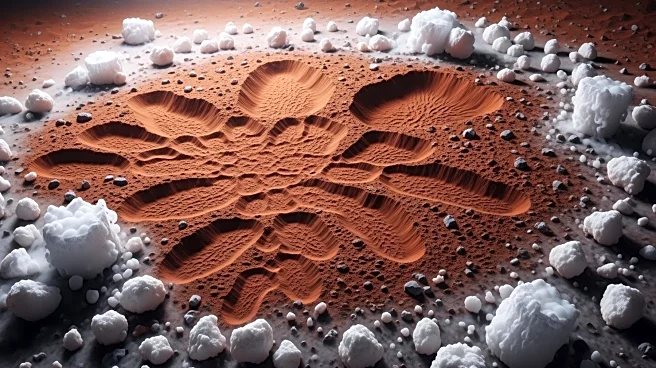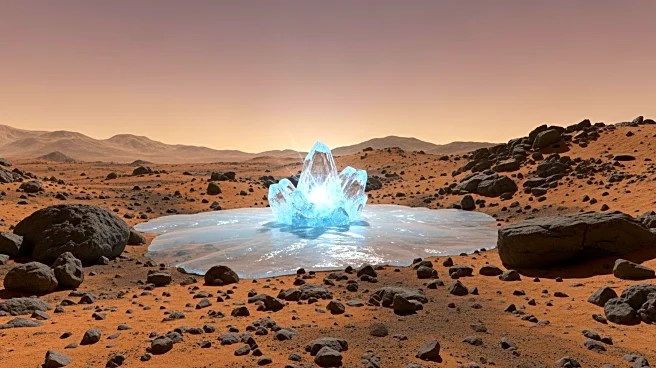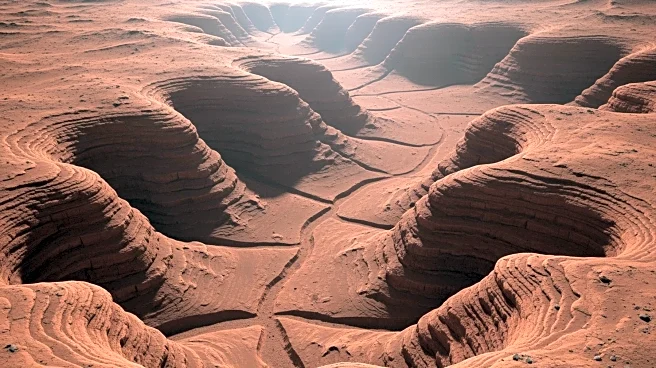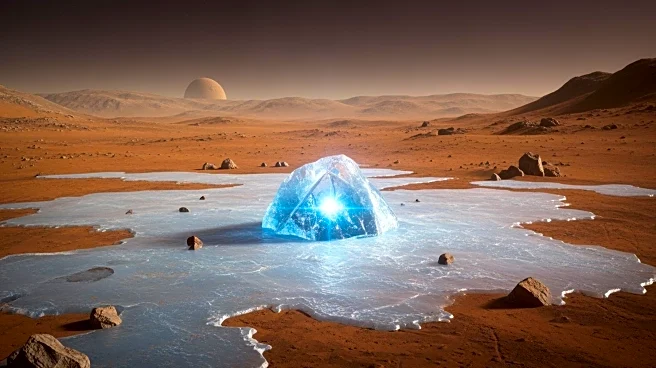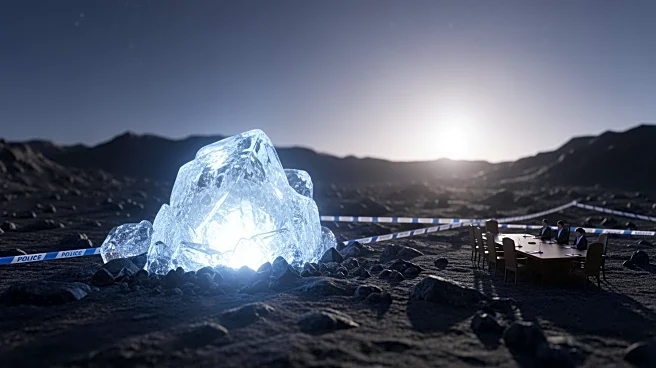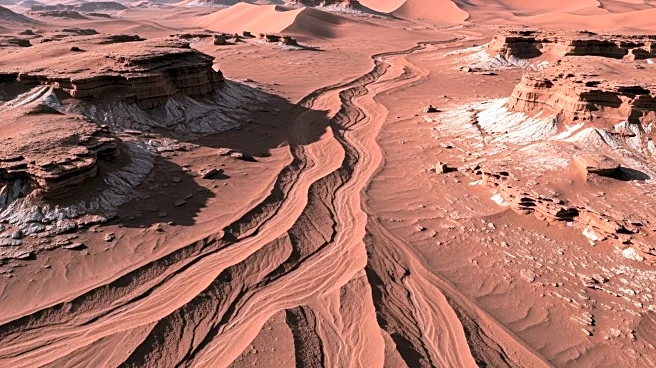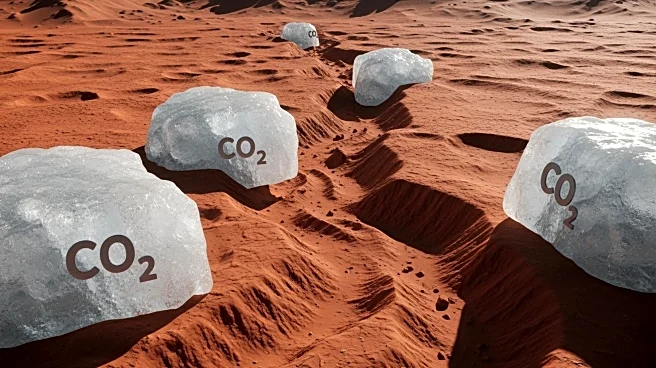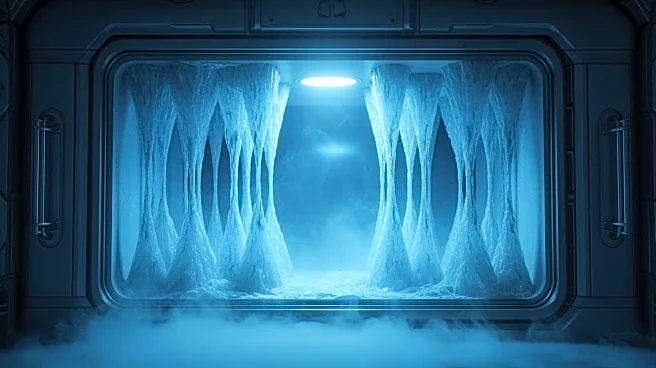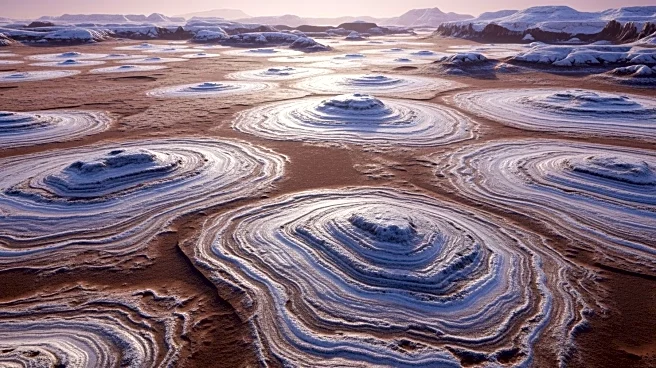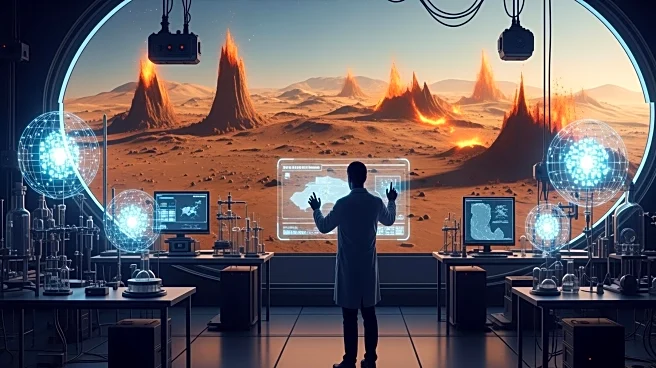What's Happening?
Researchers have been studying the mysterious gullies on Mars, which were initially thought to be formed by flowing water. However, recent experiments suggest that these features may be carved by dry ice, or carbon dioxide ice, sublimating on the Martian
surface. The thin atmosphere of Mars, composed mostly of carbon dioxide, allows dry ice to form during the winter. As temperatures rise in spring, the dry ice sublimates, transitioning directly from solid to gas. This process creates pressure that can propel the ice blocks downhill, carving gullies into the sand dunes. Experiments conducted in a Mars simulation chamber have demonstrated how dry ice can dig into sand and move downhill, mimicking the gullies observed on Mars.
Why It's Important?
Understanding the formation of Martian gullies is crucial for planetary science, as it provides insights into the geological processes on Mars. This research challenges previous assumptions about the presence of liquid water on Mars, which has implications for the search for life. By studying these unique geological features, scientists can gain a better understanding of Mars' climate and atmospheric conditions. Additionally, this research can inform future missions to Mars, aiding in the selection of landing sites and exploration strategies. The findings also offer a new perspective on geological processes, potentially leading to new insights about similar processes on Earth.
What's Next?
Further research is needed to confirm the role of dry ice in forming Martian gullies. Scientists may conduct additional experiments under varying conditions to better understand the dynamics of dry ice sublimation on Mars. Future Mars missions could include instruments designed to study these gullies in greater detail, providing more data to validate the dry ice hypothesis. Collaboration between planetary scientists and geologists could lead to new models of Martian surface processes, enhancing our understanding of the planet's history and evolution.
Beyond the Headlines
The study of Martian gullies highlights the importance of interdisciplinary research in planetary science. By combining expertise in geology, atmospheric science, and physics, researchers can uncover new phenomena that challenge existing paradigms. This research also underscores the value of simulating extraterrestrial conditions on Earth, allowing scientists to test hypotheses in controlled environments. The findings may inspire new approaches to studying other planets, expanding our knowledge of the solar system.
